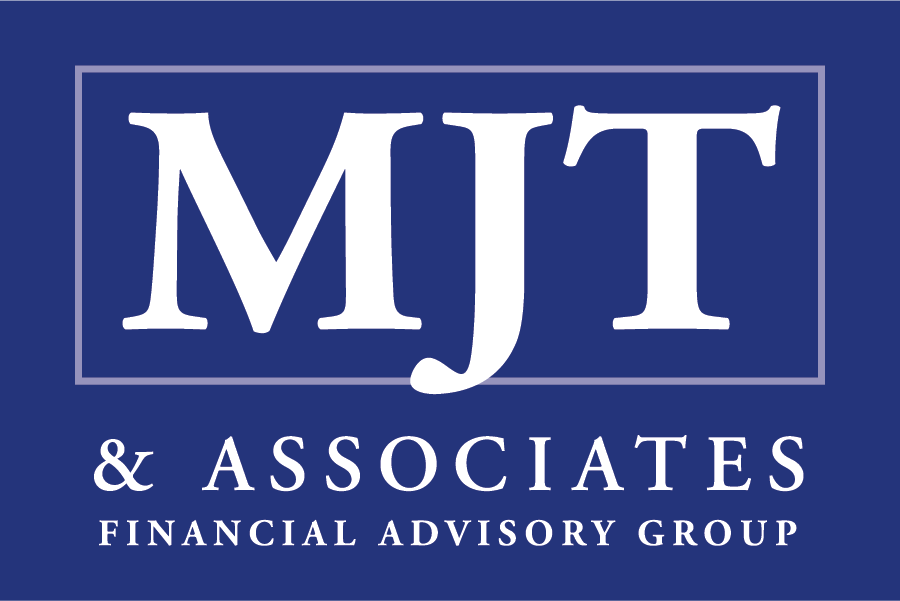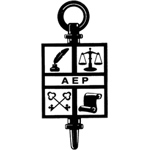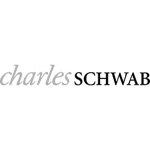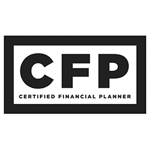Planning for retirement is a crucial step towards securing a financially stable future. However, navigating the complexities of pension retirement planning can often be overwhelming. That's why we have created the ultimate guide to help you confidently plan your future.
In this comprehensive guide, we will walk you through every aspect of pension retirement planning, providing you with the knowledge and tools you need to make informed decisions. From understanding different retirement plans to maximizing your savings, we've got you covered.
Our brand's voice is one of expertise and empathy. We understand that retirement planning can be daunting, and our goal is to simplify the process and empower you to take control of your financial future. We use a friendly and conversational tone to ensure you feel comfortable while digesting this important information.
Whether you're just starting to think about retirement or have been saving for years, our guide will help you navigate the maze of pension retirement planning. Get ready to take charge and enjoy the peace of mind that comes with a well-prepared future. Let's dive in!
The Importance of Pension Retirement Planning
Pension retirement planning is crucial for anyone looking to secure a financially stable future. It ensures that you have enough funds to maintain your desired lifestyle once you stop working. Many people underestimate the amount of money they will need in retirement, and without proper planning, they may find themselves struggling to make ends meet.
One of the main reasons pension retirement planning is so important is that it allows you to take control of your financial future. By understanding your retirement needs and creating a plan, you can make informed decisions about your savings and investments. This will give you peace of mind and the ability to enjoy your retirement years without financial stress.
Another reason to prioritize pension retirement planning is the fact that the cost of living is constantly increasing. Without proper planning, your retirement savings may not be enough to cover your expenses in the future. By starting early and regularly reviewing your plan, you can ensure that you are on track to meet your financial goals.
In summary, pension retirement planning is important because it allows you to take control of your financial future, ensures you have enough funds to maintain your desired lifestyle, and protects you from the increasing cost of living.
Types of Pension Plans
When it comes to pension retirement planning, there are several types of pension plans to consider. The most common ones include defined benefit plans, defined contribution plans, and individual retirement accounts (IRAs).
Defined benefit plans are often offered by employers and provide a predetermined monthly retirement benefit based on factors such as your years of service and salary. These plans are attractive because they offer a guaranteed income stream in retirement. However, they are becoming less common as employers shift towards defined contribution plans.
Defined contribution plans, on the other hand, allow you to contribute a certain percentage of your salary to a retirement account. These contributions are typically matched by your employer, and the funds are invested in a variety of investment options. The final retirement benefit is based on the performance of your investments. Examples of defined contribution plans include 401(k) plans and 403(b) plans.
Individual retirement accounts (IRAs) are another type of pension plan that individuals can contribute to on their own. There are two main types of IRAs: traditional IRAs and Roth IRAs. Traditional IRAs allow you to make tax-deductible contributions, while Roth IRAs offer tax-free withdrawals in retirement. Both types of IRAs have their own advantages and eligibility requirements, so it's important to understand the differences before choosing one.
In conclusion, there are several types of pension plans available, including defined benefit plans, defined contribution plans, and individual retirement accounts (IRAs). Each plan has its own features and benefits, so it's important to evaluate your options and choose the one that best suits your needs and goals.
How Much Money Do You Need for Retirement
Determining how much money you need for retirement is a critical step in pension retirement planning. While the answer will vary from person to person, there are some general guidelines that can help you estimate your retirement needs.
One popular rule of thumb is the 4% rule, which suggests that you can withdraw 4% of your retirement savings each year without depleting your funds. For example, if you have $1 million saved for retirement, you could withdraw $40,000 per year. However, it's important to note that this rule is based on historical market data and may not be applicable in all situations.
Another approach to estimating your retirement needs is to consider your current expenses and adjust them for inflation. Start by calculating your current monthly expenses, including housing, food, healthcare, and leisure activities. Then, factor in any expected changes, such as paying off your mortgage or reducing commuting costs. Multiply this amount by the number of years you expect to be in retirement, and add a buffer for unexpected expenses.
It's also important to consider any additional sources of income you may have in retirement, such as Social Security benefits or rental income. These can help offset your expenses and reduce the amount of savings you need.
Ultimately, the best way to determine how much money you need for retirement is to create a detailed budget and work with a financial advisor. They can help you consider all the factors that may impact your retirement needs and create a customized plan to achieve your goals.
Steps to Create a Pension Retirement Plan
Creating a pension retirement plan can seem daunting, but breaking it down into manageable steps can make the process much easier. Here are the key steps to follow when creating your pension retirement plan:
- Set your retirement goals: Start by determining your retirement goals and what you want to achieve during your retirement years. This will help you set a target for your savings and guide your investment decisions.
- Assess your current financial situation: Take a look at your current income, expenses, and debts. This will give you a clear picture of your financial situation and help you identify areas where you can cut back or save more.
- Estimate your retirement expenses: Consider your current expenses and how they may change in retirement. Take into account factors such as healthcare costs, travel expenses, and leisure activities. This will help you estimate how much money you will need in retirement.
- Calculate your retirement savings: Based on your retirement goals and estimated expenses, calculate how much money you will need to save for retirement. Consider factors such as inflation and investment returns to ensure your savings will last throughout your retirement years.
- Choose the right retirement accounts: Evaluate the different types of retirement accounts available and choose the ones that align with your goals and risk tolerance. Consider factors such as tax advantages, contribution limits, and investment options.
- Develop an investment strategy: Work with a financial advisor to develop an investment strategy that aligns with your retirement goals and risk tolerance. Consider diversification and risk management techniques to optimize your returns and protect your savings.
- Monitor and adjust your plan: Regularly review your pension retirement plan and make adjustments as needed. Life circumstances and market conditions may change, so it's important to stay flexible and adapt your plan accordingly.
By following these steps and working with a financial advisor, you can create a comprehensive pension retirement plan that aligns with your goals and sets you up for a financially secure future.
Investing for Retirement: Diversification and Risk Management
Investing for retirement is a crucial part of pension retirement planning. It allows your savings to grow over time and provides a potential source of income in retirement. When it comes to investing, two key concepts to consider are diversification and risk management.
Diversification is the practice of spreading your investments across different asset classes, such as stocks, bonds, and real estate. By diversifying your portfolio, you can reduce the impact of any single investment on your overall returns. This helps protect your savings from market volatility and increases the likelihood of long-term growth.
Risk management is another important aspect of investing for retirement. It involves assessing your risk tolerance and choosing investments that align with your comfort level. While higher-risk investments may offer higher returns, they also come with greater volatility. It's important to strike a balance between risk and reward and ensure that your investments align with your long-term goals.
One popular strategy for retirement investing is the "glide path" approach. This involves gradually shifting your investments from higher-risk assets to lower-risk assets as you approach retirement. By reducing your exposure to market volatility, you can protect your savings and ensure a more stable income stream in retirement.
It's also important to regularly review and rebalance your investment portfolio. Market conditions and your personal circumstances may change over time, so it's important to adjust your investments accordingly. Work with a financial advisor to ensure that your investment strategy remains aligned with your retirement goals.
In conclusion, investing for retirement is a crucial part of pension retirement planning. By diversifying your portfolio and managing risk, you can maximize your returns and protect your savings. Regularly review and adjust your investment strategy to ensure it remains aligned with your long-term goals.
Maximizing Your Pension Contributions
Maximizing your pension contributions is an effective way to boost your retirement savings and ensure a financially secure future. Here are some strategies to consider:
- Take advantage of employer matches: If your employer offers a matching contribution to your retirement account, make sure you contribute enough to receive the full match. This is essentially free money and can significantly increase your savings over time.
- Contribute the maximum allowable amount: Review the contribution limits for your retirement accounts, such as 401(k) plans or IRAs, and strive to contribute the maximum allowable amount. This will help you take full advantage of the tax benefits and potential investment growth.
- Consider catch-up contributions: If you're age 50 or older, you may be eligible to make catch-up contributions to your retirement accounts. These additional contributions can help you make up for any lost time and boost your savings as you approach retirement.
- Automate your contributions: Set up automatic contributions to your retirement accounts. This ensures that you consistently save for retirement and eliminates the temptation to spend the money elsewhere.
- Review and adjust your contributions regularly: Regularly review your retirement contributions and adjust them as needed. Consider factors such as changes in income, expenses, and financial goals. Work with a financial advisor to ensure that your contributions remain aligned with your retirement plan.
By implementing these strategies, you can maximize your pension contributions and set yourself up for a financially secure retirement. Remember, the key is to start early and remain consistent with your savings efforts.
Pension Retirement Planning for Self-Employed Individuals
Pension retirement planning for self-employed individuals can be a bit more complex than for those who are employed by a company. However, there are still several options available to help you save for retirement. Here are some key considerations for self-employed individuals:
- Simplified Employee Pension (SEP) IRA: A SEP IRA allows self-employed individuals to contribute to a retirement account based on a percentage of their income. Contributions are tax-deductible, and the funds can grow tax-deferred until retirement. SEP IRAs are relatively easy to set up and have higher contribution limits than traditional IRAs.
- Solo 401(k): A solo 401(k) is another option for self-employed individuals. It allows you to contribute as both an employer and an employee, potentially allowing for higher contribution limits. Solo 401(k) plans also offer the flexibility to choose between traditional and Roth contributions.
- Simplified Employee Pension (SIMPLE) IRA: The SIMPLE IRA is designed for small businesses with fewer than 100 employees. It allows both employers and employees to contribute to the retirement account. Contributions are tax-deductible, and the funds grow tax-deferred until retirement. SIMPLE IRAs may be a good option for self-employed individuals with a small number of employees.
- Individual 401(k): If you're a self-employed individual with no employees, an individual 401(k) may be a suitable option. It allows you to contribute as both an employer and an employee, potentially allowing for higher contribution limits. Individual 401(k) plans offer the flexibility to choose between traditional and Roth contributions.
- Consider hiring a financial advisor: Pension retirement planning for self-employed individuals can be complex, so it may be beneficial to work with a financial advisor. They can help you navigate the various retirement plan options and tailor a plan that meets your unique needs and goals.
In conclusion, self-employed individuals have several options for pension retirement planning. Consider options such as SEP IRAs, solo 401(k) plans, SIMPLE IRAs, and individual 401(k) plans. Work with a financial advisor to choose the best option for your specific circumstances.
Common Mistakes to Avoid in Pension Retirement Planning
Pension retirement planning can be complex, and it's easy to make mistakes along the way. Here are some common pitfalls to avoid:
- Procrastinating: One of the biggest mistakes people make is procrastinating when it comes to retirement planning. The earlier you start saving and planning for retirement, the more time your money has to grow. Don't put off saving for retirement, as it will only make it harder to reach your financial goals.
- Underestimating expenses: Many people underestimate how much money they will need in retirement. It's important to consider all potential expenses, including healthcare costs, travel, and leisure activities. Be realistic when estimating your retirement needs to avoid running out of money in your later years.
- Ignoring diversification: Failing to diversify your investments can expose you to unnecessary risk. It's important to spread your investments across different asset classes to minimize the impact of any single investment on your overall portfolio. Diversification can help protect your savings from market volatility and increase the likelihood of long-term growth.
- Neglecting to review and adjust your plan: Life circumstances and market conditions can change, so it's important to regularly review and adjust your pension retirement plan. Make sure your investments are aligned with your goals and risk tolerance, and be prepared to make changes as needed.
- Not seeking professional advice: Pension retirement planning can be complex, and it's often beneficial to seek the guidance of a financial advisor. They can help you navigate the various options and ensure that your retirement plan is on track.
By avoiding these common mistakes, you can set yourself up for a successful retirement and enjoy the financial security you deserve.
Conclusion: Start Planning for Your Retirement Today
Planning for retirement is a crucial step towards securing a financially stable future. By understanding different retirement plans, estimating your retirement needs, and creating a comprehensive pension retirement plan, you can take control of your financial future.
Investing for retirement, maximizing your pension contributions, and avoiding common mistakes are all important aspects of pension retirement planning. By following the steps outlined in this guide and being proactive in your approach to retirement planning, you can set yourself up for a comfortable and secure future.
Remember, the key is to start planning early and remain consistent with your efforts. Whether you're just starting to think about retirement or have been saving for years, it's never too late to take control of your financial future. By educating yourself about the various retirement options available and seeking professional advice when needed, you can make informed decisions that will benefit you in the long run.
Ultimately, retirement should be a time to relax and enjoy life, free from financial stress. By taking the time to plan and prepare now, you can ensure that your retirement years are everything you've dreamed of and more. So don't wait any longer – start planning for your retirement today and take the first step towards a brighter tomorrow. Your future self will thank you for it.











